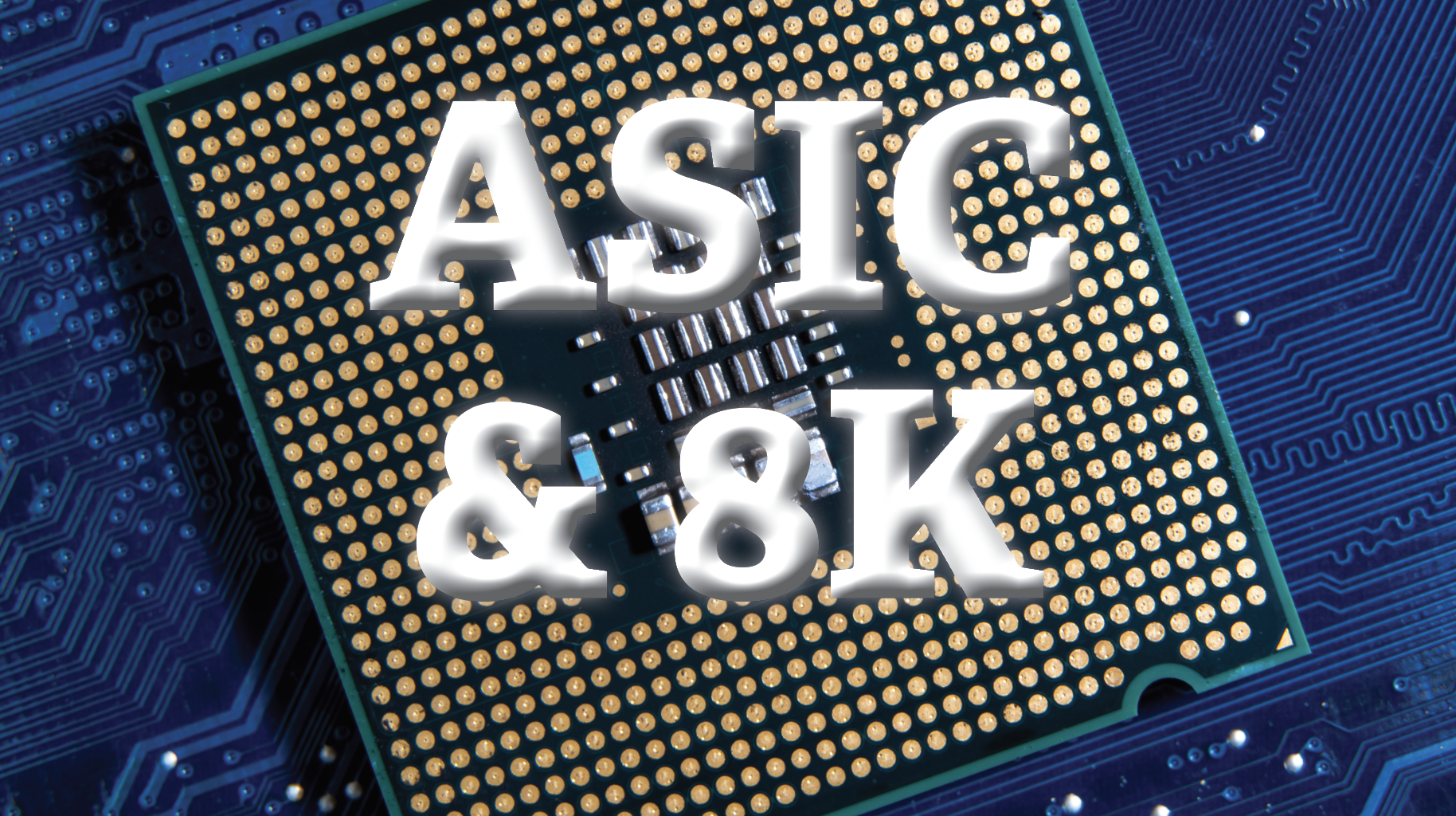An 8K Future Demands an Investment in ASIC Technology
SDVoE Alliance President, Justin Kennington shares his perspective on why ASIC technology is the best path forward for 8K, which combines AV processing, encoding/decoding, and network connectivity onto a single chip.

For a moment, let’s take a broader look outside professional AV. If the past is any indication, important trends in consumer content delivery will inform the technologies and products of our professional AV future. It’s how the professional AV industry adopted HDMI, remember? With that relationship in mind, let’s investigate the cutting-edge video delivery of our home’s televisions, tablets, and phones. Hopefully, we may shed light on the future of professional AV’s next-generation technologies and products.
Nearly every streaming service and movie studio capture the latest episodes and films utilizing video cameras with 8K resolution. While many of these shows and movies are unavailable to the public in their native resolution, content producers have recognized that 8K has already arrived. To ensure an 8K video is delivered in full resolution from the content creator to the 8K screen, many links in the chain need to be upgraded from today’s 4K components. A critical element in that chain is the compression encoder that squeezes a 50+ gigabit-per-second signal into something that will fit over an internet pipe and maintain reasonable quality. The compression and distribution task are exceptionally computationally complex.

If you need to encode ten [8K] video channels, multiply the cost and power figures by ten.
As usual, the first solution the early adopters will attempt is PC-based. A PC is easy to obtain and can be programmed to do something new—like encode 8K into H.264, VP9, or other formats. Folks are already moving down this path, including Colleen Henry, cobra commander of Facebook video special forces. In a detailed video on the Demuxed YouTube channel, she details a hardware and software solution for creating an 8K contribution encoder. The hardware? A $10,000+ PC with a 64-core CPU, dual NVIDIA graphics cards, and a capture card. Colleen admits this application for 8K is not often practical and cites boasting as one of the primary use cases.
Besides the tremendous cost of this single-channel video encoder, the power consumption is off the charts. In the video, Colleen jokes about the computer-generated heat on her lab bench. Lenovo ships the machine with a 1,000 Watt power supply, and this machine’s estimated power consumption is around 870 watts. You could build a hair dryer with that kind of power!
Don’t forget this is a single-channel solution. If you need to encode ten video channels, multiply the cost and power figures by ten.
8K for the Masses
Clearly, a PC-based solution is on the bleeding edge, and something else will be required for wide scale adoption. One solution available to the streaming industry today is the Quadra T1 VPU from NETINT. If you read my last column in AV Technology, you might not be surprised to learn that the Quadra T1 is an ASIC-based solution for video encoding.
The Quadra T1 is still PC-based encoding, so the flexibility is still there. The ASIC accelerates the encode computations, consuming fewer PC resources and power. According to figures from the 8K Association, a single-channel solution based on this card will cost $3,500 and consume 270 watts. That’s a 70 percent reduction in cost and power consumption!
A daily selection of features, industry news, and analysis for tech managers. Sign up below.
But since PC resources are not consumed by encoding, it’s possible to install multiple VPUs into the PC and take advantage of the economics of scale. In the same 8K Association model, a 10-channel encoder (built into a single PC) would cost only $2,000 per channel and consume just 50 watts per channel, resulting in 80 percent cost savings and 94 percent power savings!
What does this tell us about the future of pro AV? It’s certain that 8K is on the way, and we will need products that distribute high-resolution formats. Today’s AV over IP encoders are divided into those which are based on ASICs and FPGAs. In my last piece, I discussed how an ASIC might consume up to 80 percent less power than an FPGA doing the same job. The ASIC power consumption is an important savings for 4K. Still, it will become even more critical as resolutions increase because the higher the pixel rate, the higher the power consumption. Today’s FPGAs are simply incapable of processing 8K resolution. The FPGAs of tomorrow are power-hungry and extremely expensive. An ASIC-based solution, like SDVoE, is the only way forward.
8K & SDVoE
The SDVoE Alliance is vital in bringing 8K to professional audio and video systems integration and has already demonstrated the world’s first 8K AV-over-IP solution. SDVoE’s 8K approach is powered by the BlueRiver ASIC from Semtech, a Steering Member of the SDVoE Alliance. A BlueRiver ASIC combines AV processing, encoding/decoding, and network connectivity onto a single chip. For individuals requiring a reliable, cost-effective, and sustainable solution for 8K content, SDVoE technology, and ASIC-based products are the only viable solution on the market.
For more information on the SDVoE Alliance, please visit www.sdvoe.org. Keep up with the latest news from the SDVoE Alliance on LinkedIn, Twitter and YouTube.
